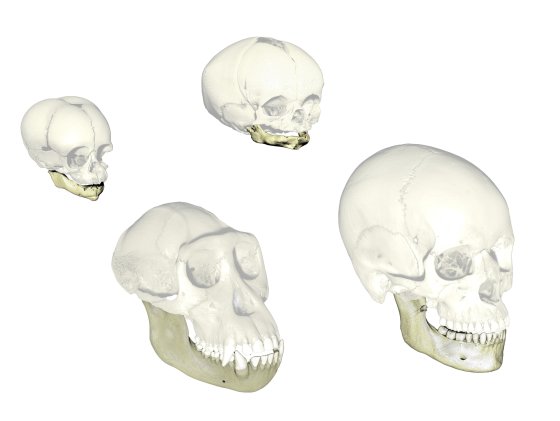
The human face is characterized by a very gracile morphology in comparison with our fossil ancestors, but also relative to the great apes of today. In the course of human evolution, the modalities and timing of this gracile morphology remain poorly understood. Through a project funded by the FACCTS program (France And Chicago Collaborating in The Sciences), a collaborative research team including Sélim Natahi, a researcher at the Collège de France attached to Pr Jean-Jacques Hublin's Paleoanthropology Laboratory, will use a new integrative approach to account for three aspects of mandibular growth in present-day humans and their closest relative, the chimpanzee. More specifically, this project will seek to better understand the nature of differences in mandibular growth patterns in these two species by studying structural changes at macro- and microscopic scales, quantifying : the external shape of the mandible, variations in cortical bone thickness and bone modelling (i.e. the action of bone cells on its surface). This study will shed light on the developmental bases underlying the gracilization process of the human face, and will also provide new data for interpreting the robustness of our ancestors from the human lineage.
Full composition of the research team :Zewdi J. Tsegai (University of Chicago, Department of Organismal Biology and Anatomy), Sélim Natahi (Collège de France, CIRB, Department of Paleoanthropology), Alexandra Schuh (Max Planck Institute for Evolutionary Anthropology, Department of Human Origins) and Sarah E. Freidline (University of Central Florida, Department of Anthropology).











